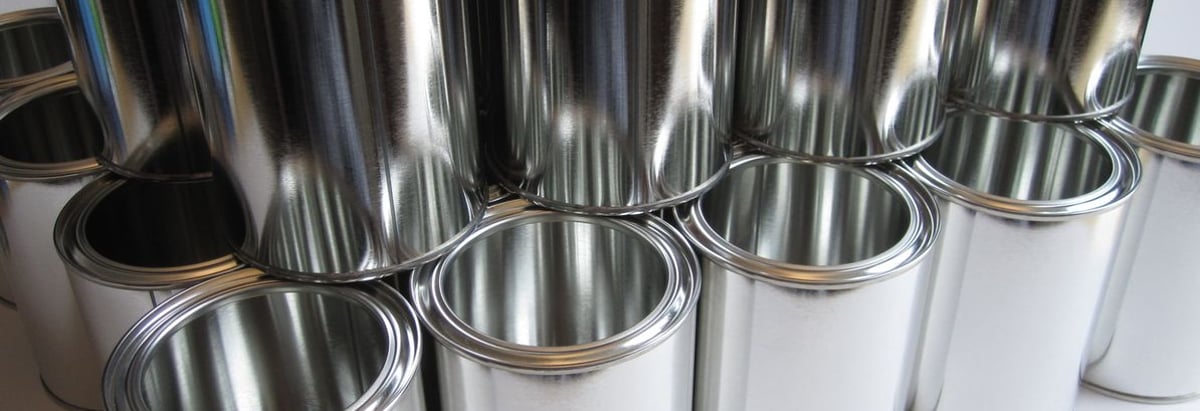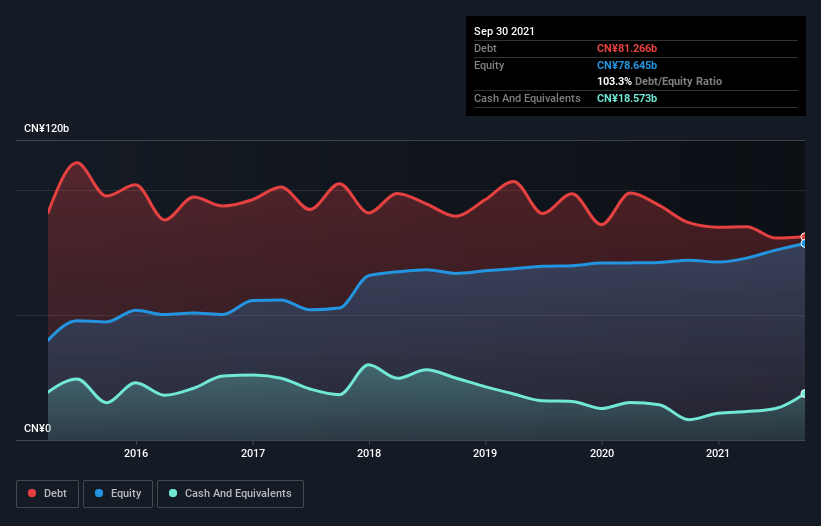- Hong Kong
- /
- Metals and Mining
- /
- SEHK:2600
Aluminum Corporation of China (HKG:2600) Seems To Use Debt Quite Sensibly

Some say volatility, rather than debt, is the best way to think about risk as an investor, but Warren Buffett famously said that 'Volatility is far from synonymous with risk.' So it seems the smart money knows that debt - which is usually involved in bankruptcies - is a very important factor, when you assess how risky a company is. We can see that Aluminum Corporation of China Limited (HKG:2600) does use debt in its business. But the real question is whether this debt is making the company risky.
What Risk Does Debt Bring?
Debt is a tool to help businesses grow, but if a business is incapable of paying off its lenders, then it exists at their mercy. In the worst case scenario, a company can go bankrupt if it cannot pay its creditors. However, a more common (but still painful) scenario is that it has to raise new equity capital at a low price, thus permanently diluting shareholders. Of course, plenty of companies use debt to fund growth, without any negative consequences. When we examine debt levels, we first consider both cash and debt levels, together.
View our latest analysis for Aluminum Corporation of China
What Is Aluminum Corporation of China's Debt?
You can click the graphic below for the historical numbers, but it shows that Aluminum Corporation of China had CN¥81.3b of debt in September 2021, down from CN¥86.9b, one year before. However, it also had CN¥18.6b in cash, and so its net debt is CN¥62.7b.

A Look At Aluminum Corporation of China's Liabilities
According to the last reported balance sheet, Aluminum Corporation of China had liabilities of CN¥53.2b due within 12 months, and liabilities of CN¥65.5b due beyond 12 months. Offsetting these obligations, it had cash of CN¥18.6b as well as receivables valued at CN¥13.9b due within 12 months. So its liabilities total CN¥86.2b more than the combination of its cash and short-term receivables.
This deficit is considerable relative to its very significant market capitalization of CN¥108.3b, so it does suggest shareholders should keep an eye on Aluminum Corporation of China's use of debt. This suggests shareholders would be heavily diluted if the company needed to shore up its balance sheet in a hurry.
We measure a company's debt load relative to its earnings power by looking at its net debt divided by its earnings before interest, tax, depreciation, and amortization (EBITDA) and by calculating how easily its earnings before interest and tax (EBIT) cover its interest expense (interest cover). Thus we consider debt relative to earnings both with and without depreciation and amortization expenses.
Aluminum Corporation of China has a debt to EBITDA ratio of 2.6 and its EBIT covered its interest expense 4.6 times. This suggests that while the debt levels are significant, we'd stop short of calling them problematic. Pleasingly, Aluminum Corporation of China is growing its EBIT faster than former Australian PM Bob Hawke downs a yard glass, boasting a 204% gain in the last twelve months. When analysing debt levels, the balance sheet is the obvious place to start. But ultimately the future profitability of the business will decide if Aluminum Corporation of China can strengthen its balance sheet over time. So if you want to see what the professionals think, you might find this free report on analyst profit forecasts to be interesting.
Finally, while the tax-man may adore accounting profits, lenders only accept cold hard cash. So the logical step is to look at the proportion of that EBIT that is matched by actual free cash flow. Happily for any shareholders, Aluminum Corporation of China actually produced more free cash flow than EBIT over the last three years. That sort of strong cash conversion gets us as excited as the crowd when the beat drops at a Daft Punk concert.
Our View
Happily, Aluminum Corporation of China's impressive conversion of EBIT to free cash flow implies it has the upper hand on its debt. But, on a more sombre note, we are a little concerned by its level of total liabilities. All these things considered, it appears that Aluminum Corporation of China can comfortably handle its current debt levels. On the plus side, this leverage can boost shareholder returns, but the potential downside is more risk of loss, so it's worth monitoring the balance sheet. When analysing debt levels, the balance sheet is the obvious place to start. However, not all investment risk resides within the balance sheet - far from it. Case in point: We've spotted 2 warning signs for Aluminum Corporation of China you should be aware of.
If you're interested in investing in businesses that can grow profits without the burden of debt, then check out this free list of growing businesses that have net cash on the balance sheet.
New: Manage All Your Stock Portfolios in One Place
We've created the ultimate portfolio companion for stock investors, and it's free.
• Connect an unlimited number of Portfolios and see your total in one currency
• Be alerted to new Warning Signs or Risks via email or mobile
• Track the Fair Value of your stocks
Have feedback on this article? Concerned about the content? Get in touch with us directly. Alternatively, email editorial-team (at) simplywallst.com.
This article by Simply Wall St is general in nature. We provide commentary based on historical data and analyst forecasts only using an unbiased methodology and our articles are not intended to be financial advice. It does not constitute a recommendation to buy or sell any stock, and does not take account of your objectives, or your financial situation. We aim to bring you long-term focused analysis driven by fundamental data. Note that our analysis may not factor in the latest price-sensitive company announcements or qualitative material. Simply Wall St has no position in any stocks mentioned.
About SEHK:2600
Aluminum Corporation of China
Primarily engages in the exploration and mining of bauxite, coal, and other resources in the People's Republic of China and internationally.
Flawless balance sheet and undervalued.

